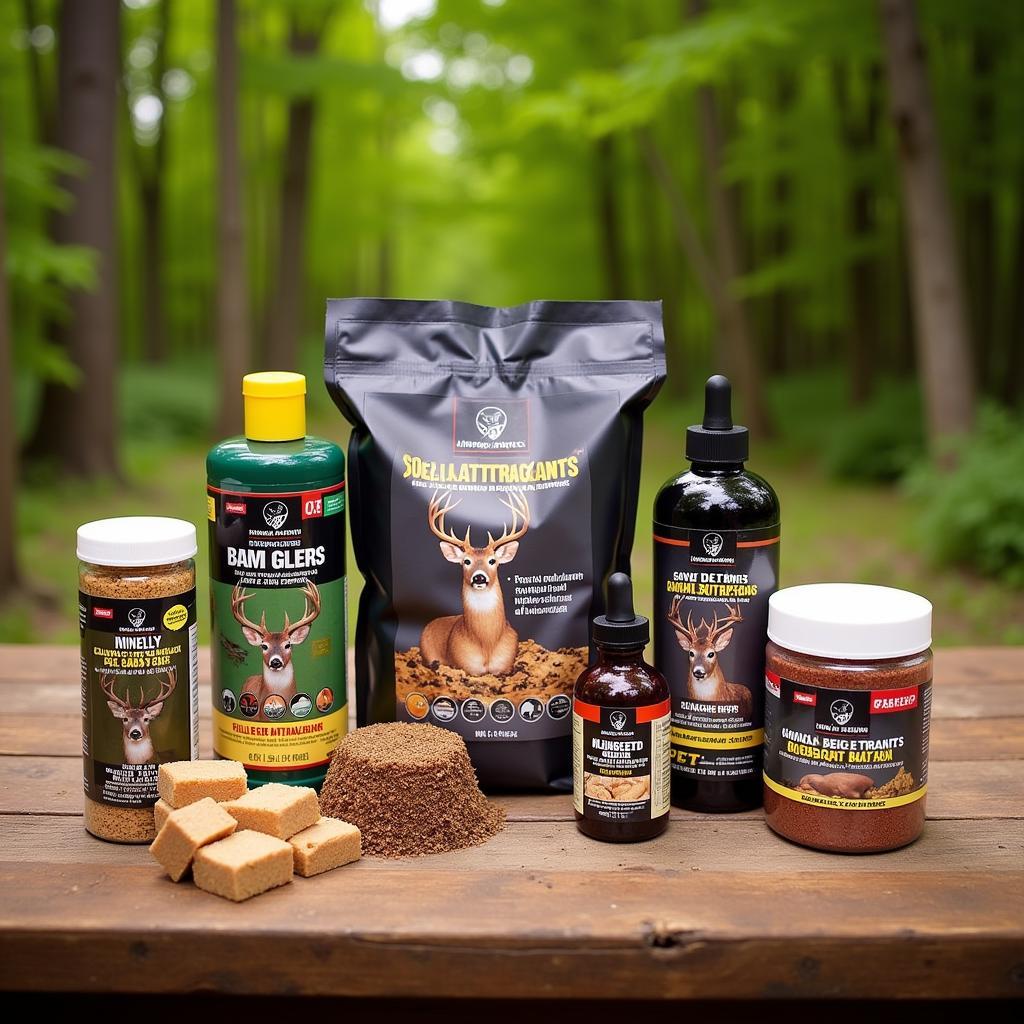Deer Attractant Food plays a crucial role in hunting and wildlife observation. Whether you’re a seasoned hunter or simply enjoy watching deer in your backyard, understanding what attracts these majestic creatures is essential. This guide will delve into the world of deer attractant food, exploring various types, strategies, and considerations for ethical and effective use.
Understanding Deer Attractant Food: What Works Best?
Deer, like all animals, have specific nutritional needs. They are primarily herbivores, meaning their diet consists mainly of plants. However, they are selective eaters, preferring certain types of vegetation over others. Understanding their preferences is key to choosing the right deer attractant food. From commercially available products to natural food sources, the options are plentiful. Check out the best deer attractant food for some top recommendations.
Natural Food Sources: Utilizing Nature’s Bounty
One of the most effective and cost-efficient ways to attract deer is by utilizing natural food sources available in their environment. This includes various plants, fruits, nuts, and even fungi. High-quality forage, such as clover, alfalfa, and various grasses, can provide essential nutrients for deer. Fruits like apples, pears, and berries are highly palatable and can be a great attractant during certain seasons. Understanding the natural food sources in your area can greatly enhance your success in attracting deer.
Commercial Deer Attractants: A Convenient Option
Commercial deer attractants offer a convenient way to entice deer to a specific location. These products come in various forms, including powders, granules, liquids, and blocks. They often contain a blend of minerals, vitamins, and flavorings designed to appeal to deer’s senses of smell and taste. While these attractants can be effective, it’s crucial to choose products that are safe for deer and the environment. Planting food plot oats can also be a great way to supplement their diet.
What Smells Attract Deer the Most?
Deer have an incredibly keen sense of smell, which they rely on for locating food, detecting predators, and communicating with other deer. Certain scents are particularly attractive to them, including sweet, fruity aromas, and the smell of salt and minerals. Some commercial attractants mimic these natural scents, while others utilize unique formulas designed to pique a deer’s interest.
 Commercial Deer Attractant Products
Commercial Deer Attractant Products
Creating the Ideal Deer Attractant Setup
Simply placing deer attractant food on the ground isn’t always enough. Creating an ideal setup involves considering factors such as location, distribution, and surrounding environment. Choosing a location near a water source or along a well-established deer trail can significantly increase your chances of success. Distributing the attractant in a way that encourages deer to linger in the area, such as creating a mock scrape, can also be beneficial. Consider a clover and oats food plot for a long-term solution.
Ethical Considerations: Responsible Use of Deer Attractants
While attracting deer can be enjoyable and beneficial for hunting and wildlife observation, it’s essential to do so responsibly. Overuse of attractants can lead to unnatural feeding patterns and potential health problems for deer. It’s crucial to follow local regulations regarding the use of deer attractants and to prioritize the well-being of the animals.
Food Plot Strategies for Deer: Long-Term Attraction
For those looking for a long-term solution, establishing food plots can be an excellent strategy. Food plots are specifically designed areas planted with vegetation that provides a supplemental food source for deer. Choosing the right plants for your region and soil type is essential for a successful food plot. Cowpeas food plot are known to be attractive to deer. Check out the best food plots for deer for more options.
Conclusion: Attracting Deer Responsibly and Effectively
Deer attractant food can be a valuable tool for hunters and wildlife enthusiasts alike. By understanding what attracts deer, utilizing ethical practices, and creating an ideal setup, you can increase your chances of success. Remember to prioritize the well-being of the deer and follow local regulations. With careful planning and execution, you can enjoy the thrill of attracting these magnificent animals while contributing to their overall health and well-being.
FAQs
- What is the best time of year to use deer attractant?
- Are there any regulations on using deer attractant in my area?
- What are the most common ingredients in commercial deer attractants?
- Can I make my own deer attractant?
- How much deer attractant should I use?
- What are some tips for creating a successful food plot?
- Are there any negative consequences of using deer attractant?
If you need further assistance, please contact us at Phone Number: 02437655121, Email: [email protected] or visit us at 3PGH+8R9, ĐT70A, thôn Trung, Bắc Từ Liêm, Hà Nội, Việt Nam. We have a 24/7 customer service team.